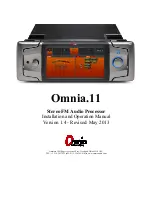
Simple Ethernet
8-3
Expansion - Ethernet
Adding Segmentation
As users are added to a simple Ethernet configuration, the utilization of the
available bandwidth increases. As was discussed in Chapter 5, an Ethernet
network that sees sufficient traffic to create sustained utilization of the available
bandwidth in excess of 40% loses performance drastically as the number of
collisions and retransmissions climbs. The point at which this becomes an issue
depends upon the needs of the users, the applications that the network is being
utilized for, and several other site-by-site basis considerations. Sustained growth
in an Ethernet network eventually causes it to expand beyond the ability of the
simple Ethernet configuration to deal with the increased loading. Network
managers facing situations such as this may find it helpful to incorporate
segmentation into existing simple Ethernet networks.
Cabletron Systems supports segmentation of two sorts, internally and externally.
External segmentation involves the use of a standalone bridge or router which
performs segmenting operations between two or more independent networks.
Often these separate segments are individual hubs, or are completely separate
networks unto themselves (an example of this might be a modular hub operating
an Ethernet network which connects to a high-speed campus backbone network
through an external router). While external segmentation does have its uses,
external segmentation of an Ethernet network requires the purchase of an
additional chassis and Ethernet repeater module for each network segment to be
added. External bridges or routers are also subject to the vagaries of power
inputs, component failure, and so on. The incorporation of segmentation in the
chassis provides a more integrated and elegant solution to the segmentation issue.
Segmentation in the chassis is reliant upon the operation of the Flexible Network
Bus of the MMAC-FNB chassis. This backplane bus provides multiple Ethernet
channels to which modules and users may be assigned. The FNB provides for the
utilization of two additional Ethernet channels which operate as separate
networks. These FNB Ethernet channels are known as Ethernet Channels B and C.
As Channels B and C constitute separate networks, they each require their own
repeaters to function. The Ethernet repeater and management modules (IRM,
IRM2, IRM3), however, only provide repeating for Channel A. To supply the
missing repeater functionality to Channels B and C, Cabletron Systems produces
Media Interface Modules called Repeating Media Interface Modules, or
“RMIMs,” designed specifically for Channels B and C, which perform their own
Ethernet repeating.
The IRM family of modules, which are the most commonly-used repeating
modules for simple Ethernet networks, cannot perform segmentation or bridging
between the backplane channels of the MMAC chassis. As these modules control
the operation of the Ethernet connectivity modules in the chassis, the
incorporation of segmentation requires that these single-segment repeaters be
removed from the chassis and replaced by modules capable of performing the
bridging functions required.
Содержание MMAC-5FNB
Страница 1: ...Cabletron Systems Networking Guide MMAC FNB Solutions ...
Страница 2: ......
Страница 4: ...ii ...
Страница 10: ...viii ...
Страница 188: ...Expansion Ethernet 8 12 Port Assignment and Virtual LANs ...
Страница 194: ...Expansion Token Ring 9 6 Port Assignment ...
Страница 198: ...Expansion FDDI 10 4 FDDI Workgroups ...
Страница 268: ...Index 4 Draft Manual For Internal Use Only ...















































